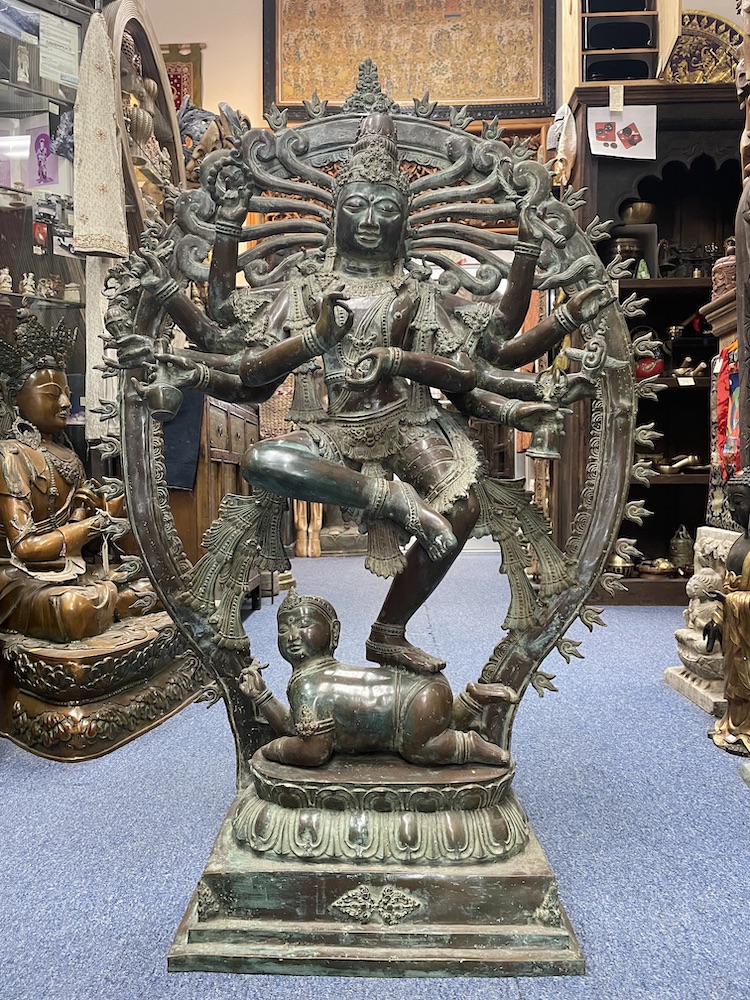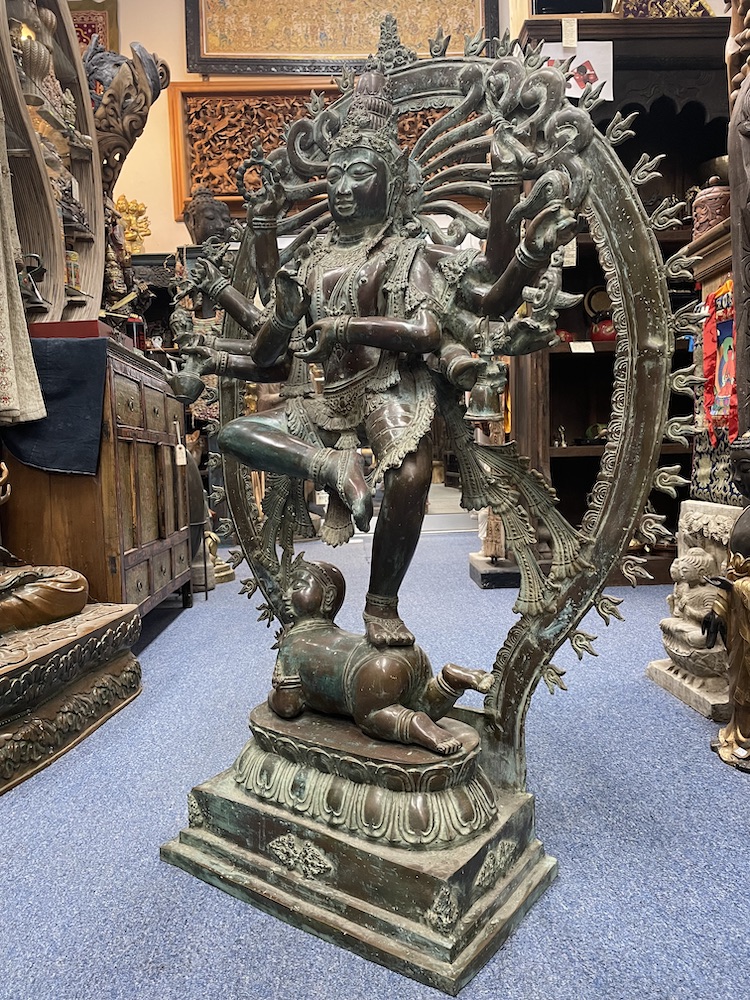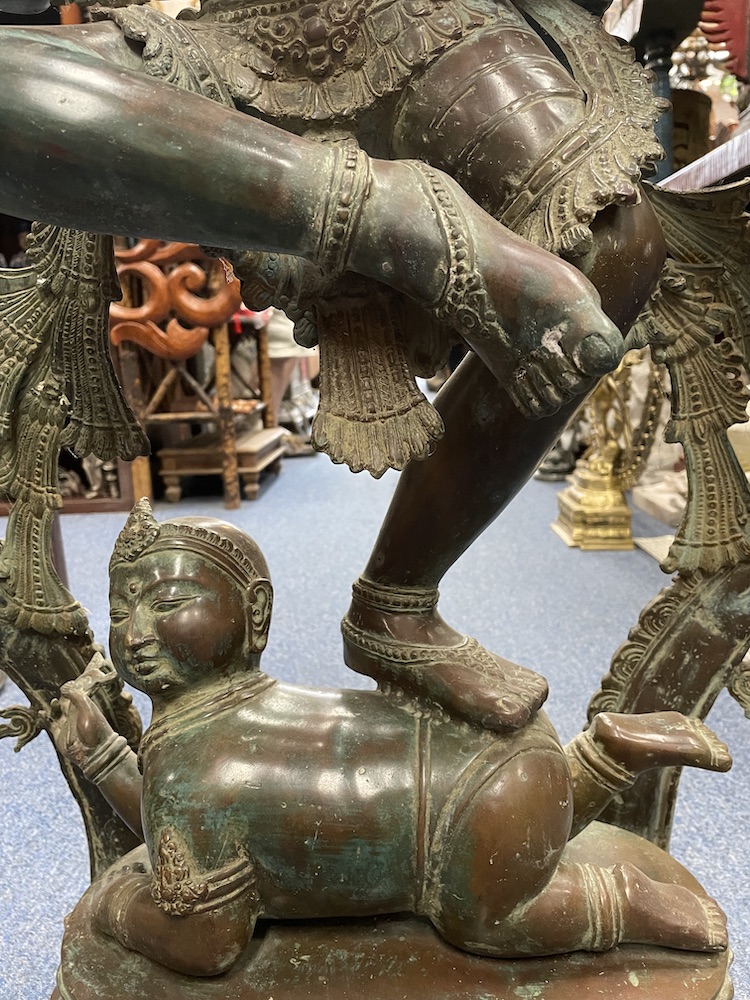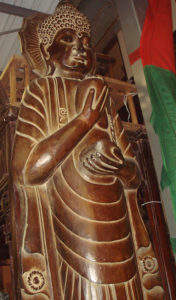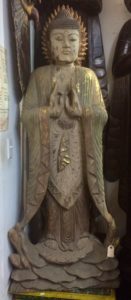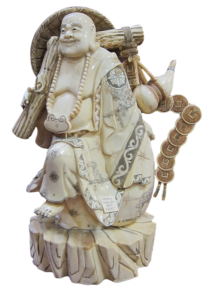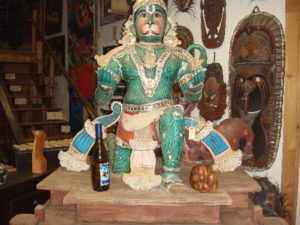
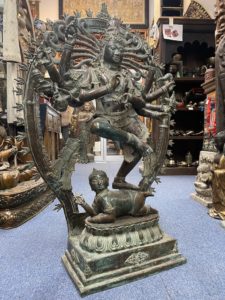
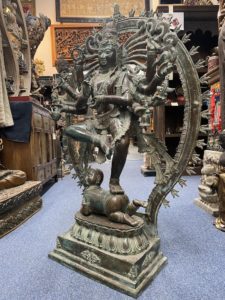

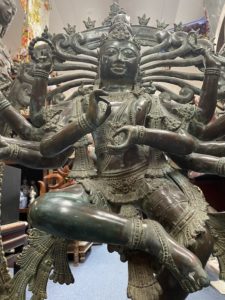

Description
Hand cast brass Nataraja dancing Shiva. Shiva standing atop dancing atop a dwarf Apasmara (a symbol of human ignorance; apasmara means “forgetfulness” or “heedlessness”).
Nataraja, (“Lord of the Dance”) the Hindu god Shiva in his form as the cosmic dancer. The two most common forms of Shiva’s dance are the Lasya and the Ananda Tandava. The classical form of the depiction appears in stone reliefs, as at the Ellora Caves and the Badami Caves, by around the 6th century. Around the 10th century, it emerged in Tamil Nadu in its mature and best-known expression in Chola bronzes. Historian found Nataraja reliefs in historic settings in many parts of South East Asia. Such as Angkor Wat and in Bali, Cambodia, and central Asia.
Usually shows Shiva with four to ten arms and dancing on the dwarf Apasmara (a symbol of human ignorance; apasmara means “forgetfulness” or “heedlessness”). You can find the pose and artwork described in many Hindu texts. Such as the Anshumadbhed agama and Uttarakamika agama, the dance murti featured in all major Hindu temples of Shaivism. It is also a well-known sculptural symbol in India and as a symbol of Indian culture.
The locks of Shiva’s hair stand out in several strands interspersed with flowers, a skull, a crescent moon, and the figure of Ganga. (Ganga is the Ganges River personified as a goddess). His figure is encircled by a ring of flames, the prabhamandala. In classic Sanskrit treatises on dance, this form, the most common representation of Nataraja, is called the bhujungatrasa (“trembling of the snake”).
Dimensions: 10.5″ x 33″ x 46.25″
Due to the size and/or the delicate situation of the item. Please contact us for more detail information /pick up or shipping options.

